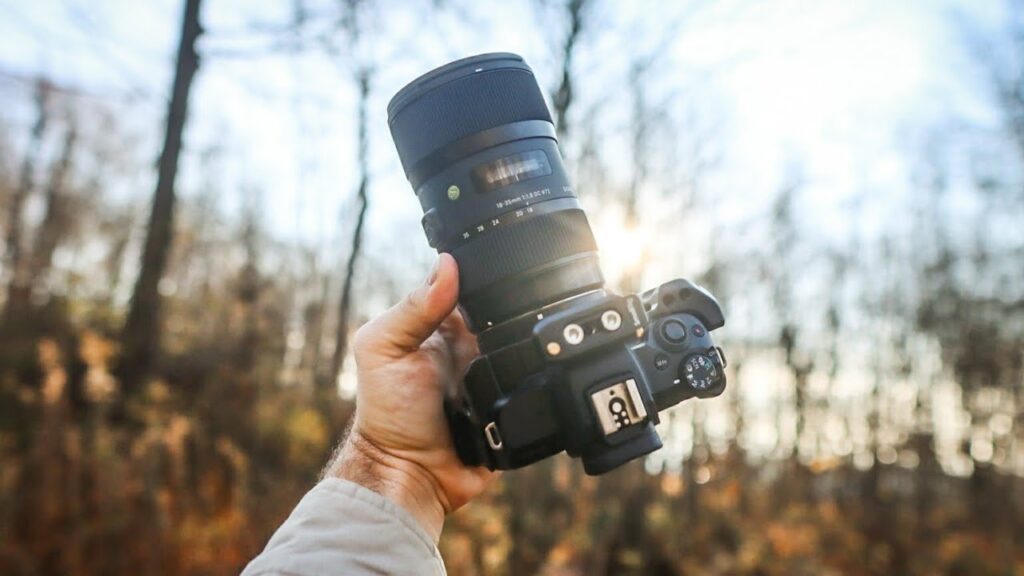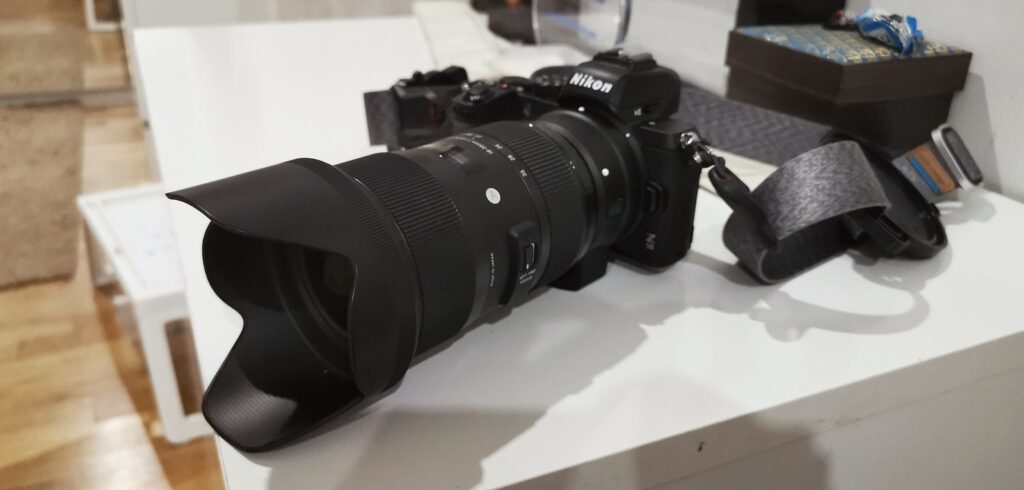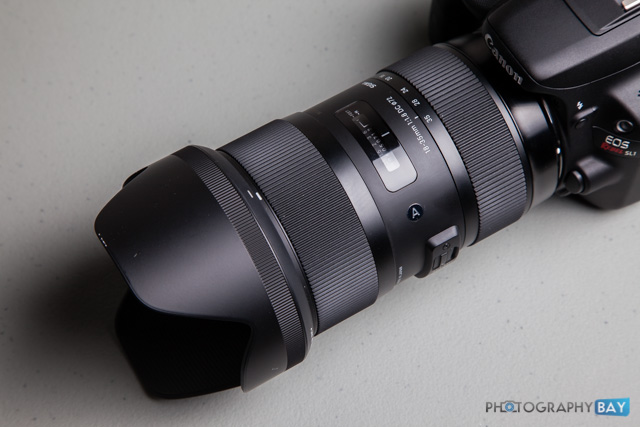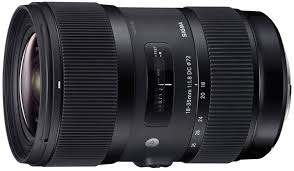If you’re looking for a lens that delivers top image quality, works well in low light, and replaces multiple primes—then the Sigma 18-35mm f/1.8 DC HSM ART might be the perfect choice. Known for its sharpness and wide f/1.8 aperture, this zoom lens is built for APS-C cameras and remains a top pick even in 2025.
In this updated review, we’ll look at how it performs in real-world use, compare it with other popular lenses, and help you decide if it’s still worth buying today. Whether you’re into portraits, video, or everyday photography, this lens has a lot to offer.
Sigma 18-35mm f/1.8 Review – Updated for 2025
The Sigma 18-35mm f/1.8 DC HSM ART lens has stood out for years as a game-changing zoom lens for APS-C shooters. With its constant f/1.8 aperture, top-tier image quality, and solid build, it became a favorite for photographers seeking prime-like performance in a zoom. But how does it hold up in 2025?

In this review, we’ll break down its performance, usability, pros and cons, and whether it’s still the best APS-C zoom lens available today. We’ll also compare it to other popular lenses and explore who this lens is ideal for in 2025.
Key Features of the Sigma 18-35mm f/1.8 Lens
This lens offers impressive specs that make it unique in the crop-sensor world. The constant f/1.8 aperture makes it the fastest zoom lens for APS-C bodies. It provides excellent creative flexibility, especially in low light.
Core Features:
- Focal Range: 18-35mm (equivalent to ~28-56mm on Canon APS-C)
- Max Aperture: f/1.8 constant
- Mount Options: Canon EF, Nikon F, Sigma SA
- Focus Type: Internal focusing with Hyper Sonic Motor (HSM)
- Construction: 17 elements in 12 groups
- Minimum Focus Distance: 11 inches (0.28m)
- Magnification Ratio: 0.23x
- Filter Size: 72mm
Sigma included high-end optical elements to reduce distortion and chromatic aberration, while maintaining excellent sharpness.
Sigma 18-35mm f/1.8 on Crop Sensor Cameras
The Sigma 18-35mm f/1.8 is built for APS-C cameras and offers versatility for various shooting styles. It’s perfect for portrait, landscape, indoor, and video shooting. The lens is compatible with Canon, Nikon, and Sigma APS-C DSLRs. On Canon’s 1.6x crop sensor, it gives a focal range of ~28.8-56mm. On Nikon/Sony/Pentax 1.5x crop sensors, it acts like a 27-52.5mm lens.
This focal range is close to popular full-frame focal lengths like 28mm, 35mm, and 50mm, making it like having three prime lenses in one. Whether you’re framing wide indoor shots or tighter portraits, this lens can handle both with ease. Its fast f/1.8 aperture adds strong low-light performance and helps achieve beautiful background blur. For APS-C shooters looking to upgrade from a kit lens, this lens offers a major step up in both image quality and creative control.
Build Quality and Handling
The Sigma 18-35mm feels robust and premium, built with a mix of metal and high-grade polycarbonate. Its Thermally Stable Composite (TSC) resists temperature shifts, keeping performance consistent across changing climates, perfect for both indoor and outdoor shooters.
The internal zoom and focus design keeps the lens length constant, which not only improves balance but also helps avoid dust intake. It feels balanced on mid-sized DSLRs like the Canon 90D and Nikon D7500 and even handles decently on larger APS-C bodies with battery grips.

The smooth, rubberized zoom and focus rings provide excellent grip and precision control. Videographers will appreciate the minimal focus breathing and quiet operation, making it a practical option for controlled shooting environments.
Its weight (811g) may feel front-heavy on smaller bodies, but the ergonomics are well thought out. The included lens hood adds protection and minimizes flare, while the padded case makes it travel-ready. Despite the weight, it’s a lens that feels professional in the hand and inspires confidence during use.
Image Quality Performance
This lens is famous for its exceptional optical performance. Whether you’re shooting wide open at f/1.8 or stopped down to f/5.6, the results are sharp and clean. It’s a standout performer in the APS-C lens market and often compared to full-frame glass due to its clarity.
Sharpness Across the Frame
The lens is impressively sharp even wide open. From center to corner, details are well-defined, making it ideal for portraits, product shots, and landscapes. Edge-to-edge sharpness improves when stopped down, with f/2.8–f/4 being a sweet spot for many users.
Whether you’re capturing textures in architecture or fine facial features in portraits, this lens delivers pro-level sharpness with minimal effort.
Color Rendering and Contrast
Colors are punchy and natural. Skin tones are pleasing, and the contrast levels give images a polished look even without heavy editing. The lens reproduces tones beautifully, enhancing dynamic range and giving life to shadows and highlights.
Color rendition is consistent across the focal range and doesn’t shift drastically when zooming—ideal for both stills and video.
Bokeh and Depth of Field
Thanks to its 9-blade rounded aperture and fast f/1.8, background blur is creamy and pleasing. Subject separation is excellent, especially at 35mm and closer focusing distances.
You can easily achieve a shallow depth of field that mimics full-frame results, especially in portraits and close-up shots. Bokeh highlights remain smooth and circular, even when the lens is slightly stopped down.
Low Light and Flare Handling
The f/1.8 aperture gives great performance in low-light environments. Whether shooting indoors or during golden hour, it delivers clean images with minimal noise.
Flare control is average; the lens can produce ghosting and flare when shooting directly into the light source. Using the included lens hood helps reduce ghosting and enhances contrast when shooting in bright or backlit conditions.
Autofocus Speed and Accuracy
Autofocus is powered by Sigma’s Hyper Sonic Motor (HSM), known for being fast and nearly silent. However, as with many third-party lenses, some users have noted focus inconsistencies on certain camera bodies.
AF is usually snappy and quiet, making it a good fit for video and street shooting. In well-lit conditions, the focus locks accurately and quickly with little hunting.
Single Shot AF
Accurate in well-lit environments, good for portraits and still subjects. The lens performs well with single-point AF, making it suitable for detailed framing. For static subjects, it nails focus most of the time when properly calibrated.
Continuous AF (Servo Mode)
Can be hit-or-miss, especially for fast-moving subjects. Tracking may drop accuracy with quick motion, so sports or wildlife photographers may find it limiting. Portrait photographers may need to fine-tune focus using micro-adjustments or rely on face-detection for better results.
Using the Sigma USB Dock
The USB Dock allows fine-tuning of autofocus at different distances. It’s worth investing in if you shoot wide open or rely on critical focus. You can program micro-adjustments for various focal lengths and distances, significantly improving performance over time.
The dock also lets you update firmware, which is a great long-term value if you plan to keep the lens for years. For serious users, it transforms the lens from “very good” to “excellent” in terms of focus performance.
Compatibility with Full Frame and Mirrorless Bodies
The Sigma 18-35mm is designed for APS-C sensors. On full-frame DSLRs, it heavily vignettes except at 35mm.

On Canon Full Frame (e.g. 6D, 5D)
Only 35mm is usable. Anything wider shows strong vignetting.
On Mirrorless Bodies
With an EF-to-RF or EF-to-EF-M adapter, the lens works on Canon R7, R10, and M50. Autofocus may be slightly slower, but image quality remains top-notch.
Real-World Shooting Experience
In real-world use, the lens excels in portrait, street, and indoor photography. The f/1.8 aperture helps achieve beautiful subject separation even on a crop sensor.
Its sharpness and color make it a reliable choice for travel and events. The limited zoom range is not restrictive for those who know how to frame their shots creatively. Many users say it feels like using three high-end primes in one zoom.
Sigma 18-35mm vs Canon 17-55mm vs Tamron 17-50mm
| Feature | Sigma 18-35mm f/1.8 | Canon 17-55mm f/2.8 | Tamron 17-50mm f/2.8 VC |
|---|---|---|---|
| Aperture | f/1.8 | f/2.8 | f/2.8 |
| Focal Range | 18-35mm | 17-55mm | 17-50mm |
| Image Stabilization | No | Yes | Yes |
| Max Sharpness | Excellent | Good | Fair |
| Autofocus | Moderate | High | Moderate |
| Price (USD) | $800 | $700 | $550 |
The Sigma wins in sharpness and light-gathering ability. The Canon and Tamron offer more reach and stabilization.
Pros and Cons of the Sigma 18-35mm f/1.8
Pros:
- Exceptional image quality wide open
- Constant f/1.8 aperture
- Premium build and smooth operation
- Replaces multiple prime lenses
- Excellent for portraits, video, and low-light
Cons:
- No image stabilization
- Heavier than average APS-C lens
- Autofocus inconsistency (varies by body)
- Limited zoom range compared to rivals
Who Should Buy This Lens in 2025?
This lens is best suited for:
- Portrait photographers
- Video shooters and YouTubers
- Event photographers
- Anyone who prefers prime-like performance in a zoom
Avoid it if you need lightweight gear for travel or rely heavily on image stabilization.
Final Verdict – Is the Sigma 18-35mm Still Worth It?
Yes, the Sigma 18-35mm f/1.8 is still one of the best APS-C lenses you can buy in 2025. Its optical performance, unique design, and build quality make it a standout choice for anyone looking to upgrade from kit lenses or replace multiple primes.
While it has minor flaws in autofocus and lacks stabilization, its benefits outweigh the drawbacks. It’s a lens that delivers consistent, high-quality results and is worth the investment for serious creators.
Frequently Asked Questions
Is the Sigma 18-35mm f/1.8 good for portraits?
Yes, especially at 35mm f/1.8, where it delivers sharp focus and creamy background blur.
Does the Sigma 18-35mm f/1.8 have image stabilization?
No, it does not. You may need a tripod or stable handheld technique for video.
Can I use this lens on full-frame cameras?
Technically yes, but only at 35mm. Strong vignetting occurs at wider focal lengths.
Is this lens good for video work?
Yes, especially for Canon APS-C DSLRs. It provides excellent quality and smooth manual focus.
How is the autofocus performance?
Fast and quiet, but can be inconsistent. Calibrating with the USB Dock improves results.
Is it worth buying in 2025?
Definitely. It’s still unmatched in its category.
Which mount options are available?
Canon EF, Nikon F, Sigma SA. Can be adapted to Canon RF and EF-M.
How does it compare to Canon 17-55mm f/2.8?
The Sigma is faster (f/1.8) and sharper, while the Canon has IS and longer zoom.
Does it work with Canon R7 or R10?
Yes, via adapter. Image quality is superb, but AF may be slightly slower.
Is the Sigma USB Dock necessary?
Highly recommended for autofocus calibration and firmware updates.

